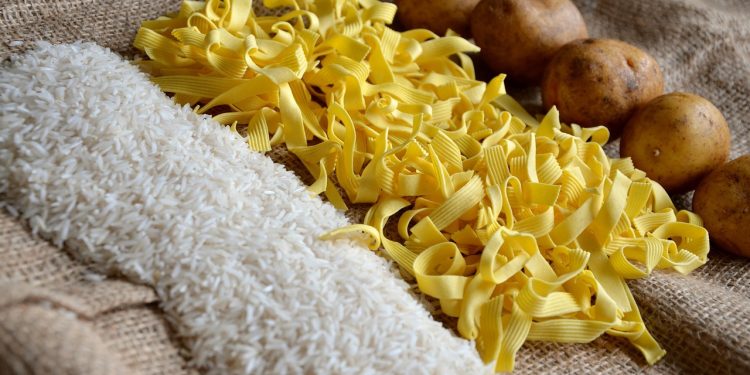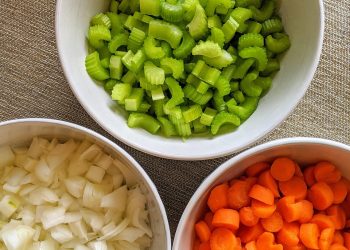A well-organized grocery list is the backbone of efficient meal planning. It helps save time, reduces waste, and ensures that you always have the ingredients you need for healthy and satisfying meals. Whether you’re feeding a family or cooking for one, creating a weekly grocery list doesn’t have to be overwhelming. With a systematic approach, you can streamline your shopping trips and stay on budget.
Why a Grocery List Matters
- Reduces Food Waste: By planning meals and purchasing only what you need, you minimize the chances of food spoiling in your fridge.
- Saves Time: A detailed list means fewer trips to the store and less wandering through aisles.
- Supports Health Goals: When you shop with a plan, you’re more likely to choose nutritious options instead of impulse purchases.
- Stays Within Budget: A list helps you focus on essentials and avoid unnecessary spending.
Steps to Create a Weekly Grocery List
- Plan Your Meals
Start by deciding what meals you’ll prepare for the week. Consider breakfasts, lunches, dinners, and snacks. Factor in any special occasions or meals you’ll eat out. Tips for Meal Planning:
- Choose recipes with overlapping ingredients to reduce costs.
- Opt for dishes that use pantry staples like rice, pasta, or canned beans.
- Include a mix of quick meals for busy days and more elaborate ones when you have time to cook.
- Check Your Pantry and Fridge
Before heading to the store, take stock of what you already have. Cross-check your planned meals with your existing inventory to avoid buying duplicates. How to Organize Your Check:
- Group items by category: produce, dairy, proteins, grains, and pantry staples.
- Note the quantities you need to replenish based on your weekly menu.
- Categorize Your Grocery List
Organizing your list by category makes shopping more efficient and ensures you don’t miss anything. Common categories include:
- Produce: Fruits and vegetables.
- Proteins: Meat, poultry, seafood, tofu, and eggs.
- Dairy: Milk, cheese, yogurt, and butter.
- Pantry Staples: Grains, canned goods, spices, and condiments.
- Snacks: Nuts, chips, granola bars, or other grab-and-go options.
- Frozen Foods: Frozen vegetables, fruits, or pre-made items.
- Consider Portion Sizes and Quantities
Think about how many servings each meal will provide and adjust your quantities accordingly. Avoid overbuying perishables unless you plan to freeze or preserve them. - Incorporate Seasonal and Sale Items
Check weekly store flyers or apps for discounts and seasonal produce. Incorporating these items into your meals can help save money. Examples:
- Buy berries when they’re in season and freeze extras for smoothies.
- Take advantage of discounts on bulk items like rice, oats, or canned goods.
- Write a Detailed List
Be as specific as possible to avoid confusion at the store. Instead of writing “fruit,” list “6 apples and 2 bananas.” This level of detail ensures you buy exactly what you need.
Smart Shopping Tips
- Stick to the Perimeter of the Store
The outer edges of the store typically house fresh produce, dairy, and proteins, while processed foods are found in the inner aisles. - Shop with a Full Stomach
Shopping when hungry often leads to impulse buys and unhealthy choices. Eat a snack or meal before heading to the store. - Bring Reusable Bags
Save money and reduce waste by bringing your own bags for groceries. - Limit Impulse Buys
If you’re tempted to grab something not on your list, ask yourself if it’s truly necessary or fits into your weekly meal plan. - Use a Grocery App
Apps like AnyList, Out of Milk, or your grocery store’s app can help you create digital lists, check for deals, and organize your shopping.
Examples of a Weekly Grocery List
For a Family of Four:
- Produce:
- 6 bananas
- 3 apples
- 1 head of lettuce
- 1 bag of baby carrots
- 2 bell peppers
- 1 bunch of broccoli
- Proteins:
- 2 pounds of chicken breast
- 1 pound of ground turkey
- 1 dozen eggs
- Dairy:
- 1 gallon of milk
- 1 block of cheddar cheese
- 2 cups of Greek yogurt
- Pantry Staples:
- 1 box of whole-grain pasta
- 1 bag of brown rice
- 2 cans of black beans
- 1 jar of marinara sauce
- Snacks:
- 1 bag of trail mix
- 1 box of granola bars
For an Individual:
- Produce:
- 4 bananas
- 2 avocados
- 1 bag of spinach
- 1 cucumber
- 1 sweet potato
- Proteins:
- 1 pound of salmon
- 1 package of tofu
- Dairy:
- 1 carton of almond milk
- 1 container of cottage cheese
- Pantry Staples:
- 1 box of quinoa
- 1 jar of peanut butter
- 1 can of chickpeas
- Snacks:
- 1 bag of roasted almonds
Adjusting Your List for Special Diets
- Vegetarian/Vegan:
- Focus on plant-based proteins like beans, lentils, tofu, and tempeh.
- Stock up on fortified plant-based milks and nutritional yeast.
- Gluten-Free:
- Replace wheat-based products with gluten-free alternatives like rice pasta or almond flour.
- Check labels to ensure processed foods are certified gluten-free.
- Low-Carb/Keto:
- Focus on proteins, healthy fats, and low-carb vegetables like zucchini, cauliflower, and leafy greens.
- Avoid high-carb snacks and grains.
Reviewing and Revising Your List
As you get into the habit of creating weekly grocery lists, you’ll learn what works best for your household. Review your list after each shopping trip and adjust based on:
- Items you consistently buy but didn’t use.
- Foods that spoil before being eaten.
- Meals that worked well and can be repeated.
Benefits Beyond the Store
A thoughtful grocery list doesn’t just help in the supermarket—it simplifies your entire week. From cooking to budgeting, this simple tool reduces stress, saves money, and keeps your meals aligned with your goals.










